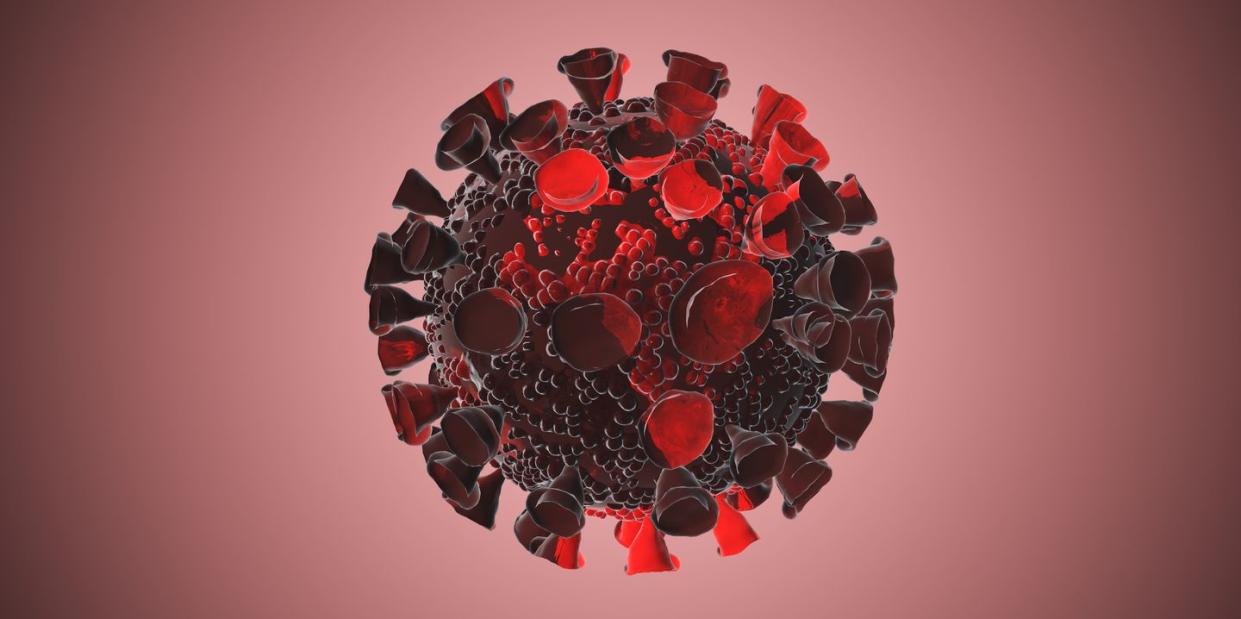Should You Be Worried About COVID-19 Variants? Here’s What Doctors Want You to Know

For weeks, coronavirus variants have been dominating headlines. First, the U.K. variant, known as B.1.1.7, drew global attention due to its higher degree of infectiousness, and has now spread to various states across the country. It was soon followed by the South African variant, 501.V2. (also known as B.1.351), which shares certain mutations with the U.K. variant but has yet to be detected in the U.S.
However, there are reports of additional variants emerging across the country, including one discovered in California (CAL.20C), which appears to be driving a surge in cases. In fact, this strain has shown up in more than a third of COVID-19 cases in Los Angeles, according to preliminary research from the Department of Pathology and Laboratory Medicine at Cedars-Sinai.
It’s important to note that all viruses eventually change through mutation, and new variants of SARS-CoV-2, the novel coronavirus that causes COVID-19, are expected to appear over time, according to the Centers for Disease Control and Prevention (CDC).
But what is a variant, exactly? And what do these new strains mean for the COVID-19 pandemic at large? Here’s what infectious disease doctors want you to know.
What is a COVID-19 variant?
Simply put, “a variant is a version of the virus that has accumulated enough mutations to represent a separate branch on the family tree,” says infectious disease expert Amesh A. Adalja, M.D., senior scholar at the Johns Hopkins Center for Health Security.
Viruses mutate when they replicate their RNA, or genetic makeup, in a host’s cells. This is actually part of the pathogen’s life cycle and helps it survive, explains Thomas Russo, M.D., professor and chief of infectious disease at the University at Buffalo in New York. When the mutations stick around and spread, they lead to a variant of the virus.
“When SARS-CoV-2 replicates, errors get made—not infrequently,” says Stanley H. Weiss, M.D., professor at both the Rutgers New Jersey Medical School and the Dept. of Biostatistics & Epidemiology at the Rutgers School of Public Health. “Most of these are defective, don’t replicate very well, don’t carry on, and don’t matter. Occasionally, the wrong set of combinations and mutations can occur.”
Again, this isn’t unique to the novel coronavirus. “Mutations occur all the time with viruses at different rates and frequencies,” Dr. Russo says.
Why do scientists track variants?
Tracking different strains helps scientists figure out if certain mutations alter the way a virus functions, Dr. Adalja says. Some viral mutations may impact the best form of treatment, he points out, which would be vital information for a deadly illness like COVID-19.
In the case of SARS-CoV-2, scientists are monitoring its variants in an effort to understand how genetic changes to the virus might impact its infectiousness (and thus, its spread), the severity in illness it causes, the best form of treatment, and the effectiveness of available vaccines, Dr. Russo says.
For example, this is why you need to get the flu shot every year. Scientists develop the vaccine depending on which strains are most widely circulating for that particular flu season.
Are new variants always more dangerous?
Not necessarily. New variants may show up and then just disappear, and “some may even decrease transmissibility,” Dr. Adalja says. “Some could decrease the ability to survive on surfaces.”
However, certain viral variants can be stubborn. They show up, persist, and even thrive. “Those are the ones we want to pay closer attention to,” Dr. Russo says.
At the moment, two coronavirus variants—B.1.1.7, which originated in the U.K., and 501.V2 (B.1.351), which originated in South Africa—are getting the most attention, but Dr. Russo says that more will likely follow because scientists are now actively looking for new mutations, “so, naturally, we’re going to find them.”
Should you be worried about variants?
They should be a good reminder to keep doing what you’re doing to help prevent the spread of COVID-19. Because these new variants seem to spread more easily, we still need to do our part to minimize cases to reduce the strain on our healthcare system: Keep wearing a face mask in public, maintaining a six-foot distance from people outside of your home, thoroughly washing your hands, and cleaning high-touch surfaces, Dr. Adalja says.

That said, variants aren’t a reason to panic. “At this time, we don’t think any of the [COVID] variants cause more severe disease,” Dr. Russo says. “It’s good we’re keeping an eye on them, so we can assess if they have any consequences.”
What’s more, preliminary evidence also suggests that both the Pfizer and Moderna COVID-19 vaccines are effective against the new variants that have surfaced, Dr. Adalja adds—all the more reason to line up for your first dose when it’s available to you.
“In the United States, we have not been looking for these variants enough. That needs to change,” Dr. Weiss says. “Even if we’ve managed to avoid multiple bullets with those variants, we don’t know what the future portends. That’s why we need to get as many people vaccinated as soon as possible.”
Go here to join Prevention Premium (our best value, all-access plan), subscribe to the magazine, or get digital-only access.
FOLLOW PREVENTION ON INSTAGRAM
You Might Also Like

